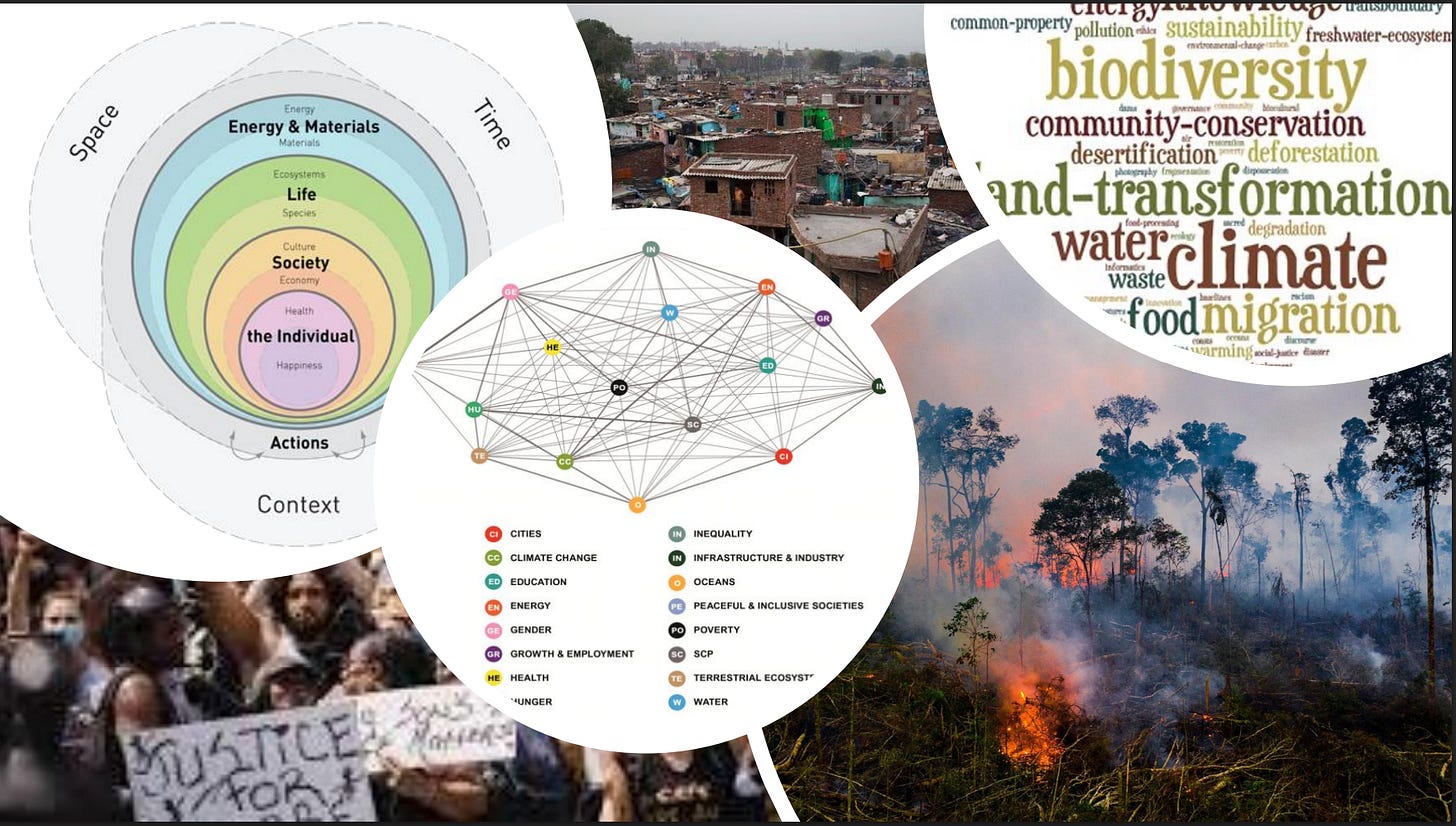The growing field of inner development for sustainable development
My lecture at the Masters of Development Practice Global Classroom
I’m excited to share this lecture with you:
It’s from this past October 2024 for the Masters of Development Practice Global Classroom. Over 200 students joined across the world through their network of graduate programs in international development.
You might remember me sharing about this when it happened—it was an awesome, full circle moment for me: returning to the grad program that helped shape me, and offering a synthesis of the work I’ve been doing to map the niche yet emerging field of inner development for sustainable development—a part of the field that is often overlooked, but increasingly recognized for its importance.
Below is more about the lecture, along with articles and links to dive deeper.
Teaching about this field of research and practice, and the unique contribution I bring to it through We Heal For All, is what I specialize in. If you’d like to bring a lecture, workshop, or conversation to your team or community, please reach out. I’d love to work together to do so.
Development practitioners manage complexity—of all kinds
We live in complicated times riddled with complicated issues. As development practitioners, we design solutions to them—programs and policies that take a whole-systems approach to doing so.
But the reality is that change is happening fast and involves issues that have existential consequences. The systems we work in are imperfect, and require a lot from us to change. As leaders, this naturally affects our inner worlds leading to things like: burnout, disillusionment, and feeling stuck.
Many of us go into this line of work because of our values—wanting to be of service, driven by morals and beliefs about right and wrong. We also see what’s possible—peace, prosperity, health—even if just in our minds’ eyes. Therefore we manage the complexity of holding both breakdown and opportunity.
This field of inner capacity development—inner transformation for outer transformation—is a response to this dimension of the work and the needs that come with it. It helps us stay agile, grounded, and in integrity as we work in an uncertain, fast-changing world.
Case Examples: Inner Development in Practice
In the lecture I share more about the need for this work, citing frameworks like the Inner Development Goals or the Collective Change Lab’s ‘Healing Systems’ SSIR article.
I then bring it to life by providing three examples of what this conversation and work looks like in practice, organized by target populations:
Leaders: Institutional change
Students: Education for sustainable development
General public: Culture change
Institutional Change
UN SDG Leadership Labs
The lecture explores the role of systems leadership in sustainable development and institutional change. It showcases the UN SDG Leadership Labs—a partnership between the Presencing Institute and the UN Development Coordination Office—supporting UN Country Teams to meet new leadership mandates within the UN system. These Labs created space to step outside hectic and bureaucratic routines to come together as peers to build collective vision, listen deeply (especially to often unheard stakeholders), and develop the collective capacity to shift the inner place from which they operate from as a coordinating body.
Education for sustainable development
400 Years of Inequality Training
A second example highlights the importance of transformative learning in education for sustainable development. The lecture showcases the work of Dr. Angel Acosta at Columbia University’s Teachers College, whose 400 Years of Inequality Training helps educators and professionals re-examine inherited worldviews through contemplative, mindfulness-based learning. Using a 4ft x 20ft historical timeline, learners engage in mindful listening and reflection on racial and socioeconomic inequality in the US.
Culture change
We Heal For All
The lecture concludes with a focus on culture change through emotional healing. As fear, anxiety, and emotional overwhelm rise across the general public about the world, these experiences signal a deeper shift in our collective consciousness. The work I do through We Heal For All is offered as a case example of an initiative that supports bottom-up culture change by helping everyday people process emotions as catalysts for transformation. Rooted in clinical psychology and neuroscience, the project offers healing-centered tools that help individuals relate differently to a world in flux.
Bring this lecture to your audience
If you’d like to bring this lecture to your team or community, please reach out. I’d love to work together to do so.
Flagship courses ・ Guided meditations ・ Coaching ・ Speaking & Workshops








